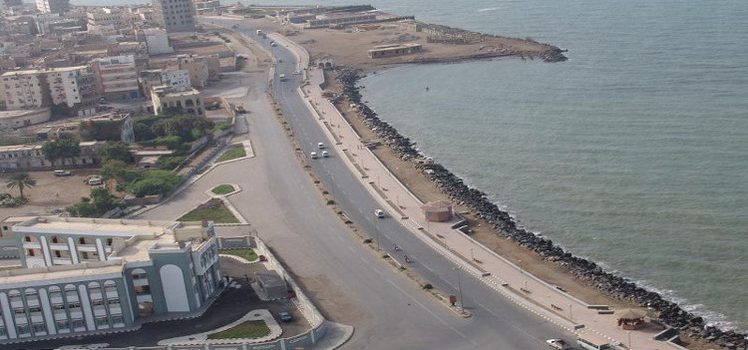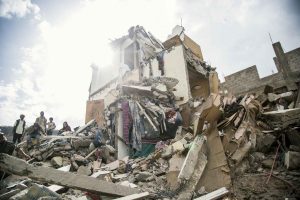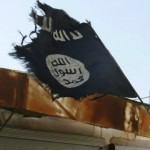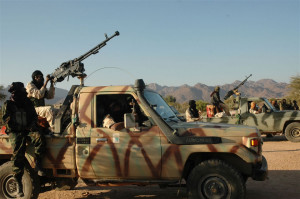by Peter Salisbury
On 17 December, the UN announced a ceasefire in the contested governorate of Hodeida. Thus far, after some initial wobbling, it has held. In this Q&A, Crisis Group’s senior Yemen analyst Peter Salisbury unpacks the ceasefire and assesses its prospects.
What does the ceasefire mean?
The Hodeida ceasefire is a first step toward implementing an agreement reached at UN-led talks between Yemen’s internationally recognised government and Huthi rebels in Sweden on 13 December to demilitarise Hodeida city and port, and the wider Red Sea trade corridor. Early reports of ceasefire violations are troubling but not unexpected for a process that likely will encounter more than a few bumps in the road.
Hodeida is currently held by the Huthis and surrounded by rival fighters. Under the agreement, the rebels and the government agreed to remove their military forces from both the port facilities and the city, and also from the nearby port of Salif and Ras Issa oil terminal. In addition, the parties said they would establish and protect a humanitarian corridor along the road linking Hodeida with Sanaa, Yemen’s highland capital. UN observers will be stationed in key positions to ensure that the parties are keeping to the agreement’s terms.
The ceasefire announcement launches a period of concerted international pressure on the two sides to turn the agreement into reality. Mutual withdrawals are meant to happen within a mere three weeks. To that end, the UN will form a Redeployment Committee composed of representatives from the two rival factions, likely to be chaired by a UN military expert, Patrick Cammaert of the Netherlands. The committee will be responsible for working out a detailed plan for the phasing of withdrawals and the limits of what will effectively be a demilitarised zone surrounding the Red Sea trade corridor.
At the same time, the UN must negotiate local security and governance arrangements that work for the Huthis and the government, as well as the Saudi-led coalition that backs the latter.
What did the parties agree to in Sweden?
Martin Griffiths, the UN special envoy, went to Sweden with a long wish list: a prisoner swap, an agreement on the reopening of Sanaa airport, a deal to begin reintegrating the Huthi – and government – controlled branches of the Central Bank of Yemen to help streamline civil service payments, and agreements to end the fighting in Hodeida and the central city of Taiz, along with consensus on a framework plan for the peace process. He also wanted to get the parties to agree to reconvene in late January.
What he achieved was an “executive mechanism” for prisoner swaps, a last-minute agreement on Hodeida and a “statement of understanding” that the Huthis, the government and Yemeni civil society representatives would form a committee to discuss Taiz. The Huthis rejected an airport deal that would have seen the government inspect flights en route to Sanaa in government-controlled Aden, and the government refused to sign up for the framework peace plan, claiming it gave too much legitimacy to the Huthis. The discussion on the central bank also fell by the wayside, although the parties did agree that revenues from Hodeida port would be deposited at the bank’s Hodeida branch for civil service salaries nationwide.
Together, the prisoner swap, the Hodeida agreement and the Taiz understanding constitute the so-called Stockholm Agreement, which also includes a commitment to meet again under UN auspices in January.
There are three equally valid ways of reading the agreement. It is the biggest step forward in UN mediation efforts in Yemen since the Saudi-led coalition entered the conflict on the government’s side in March 2015. It is a signal of increased international focus on the conflict. And it is an indicator of the gulf yet to be bridged between the parties as the UN sets about mediating an accord to end the war.
In support of the first reading, Griffiths can plausibly claim a more productive first few months in office than any of his predecessors have enjoyed since the war began. In support of the second, the shifts in the international environment – including growing concern over Yemen’s humanitarian crisis, now the world’s largest – undoubtedly helped him. As for the third, less optimistic interpretation: the prisoner exchange and the Hodeida ceasefire both reflect a strong humanitarian impulse rather than strategic calculations. As such, they are not necessarily stepping stones toward negotiations on ending the war, and in fact the texts of the deals make it clear that the parties do not see them as the beginning of a peace process. The challenge Griffiths faces is to make them so.
How did we get here?
In the weeks and months before the Sweden talks, an almost fatalistic pessimism had crept into most analysis of the Yemen war. An offensive on Hodeida was proceeding, despite the likely humanitarian impact, with no sign from Washington that the Trump administration would counsel restraint to its Gulf allies, and every indication it would instead continue to provide them with military support, including in-air refuelling.
The shift came following the murder of Washington Post columnist Jamal Khashoggi, a U.S. permanent resident, at the Saudi consulate in Istanbul in early October. The killing had a galvanising effect on the U.S. Congress. For many representatives on both sides of the aisle, it was a step too far by an ally that had embarked upon an erratic and destabilising foreign policy. The hardening of Congressional attitudes in turn created an opening for critics of the U.S.’s involvement in the Yemen war, who also seized on the UN’s escalating warnings about Yemen’s worsening humanitarian crisis. The UN humanitarian chief Mark Lowcock went so far as to say that an assault on Hodeida port and city of the kind planned by the Saudi-led coalition would trigger a “great big famine”.
Beginning in October, senior U.S. officials took an increasingly strong public stance on Yemen, calling for a political conclusion to the war, partly to try to pre-empt growing Congressional pressure. At the end of October, Secretary of Defense Jim Mattis and Secretary of State Mike Pompeo called for a ceasefire and talks to take place in Sweden within a month.
As talks in December proceeded, and a positive outcome remained uncertain, Mattis reportedly made last-minute phone calls to leaders in Saudi Arabia and the United Arab Emirates (UAE) (which has led the Hodeida offensive). His calls apparently clinched the Gulf monarchies’ support for a deal, which they then made clear to Yemeni government negotiators.
Further pressure will be needed to ensure the deal’s implementation. One important source of leverage will be the U.S. Congress. On 13 December, the Senate voted 56-41 on a measure to curtail U.S. support to the coalition’s military operations in Yemen. For now, this action is largely symbolic. In order for the Senate measure to become law, the House of Representatives would need to pass a companion bill, which could only be enacted through presidential signature or a congressional override of the president’s veto. Even if such a bill passes, questions surround its effectiveness as the executive branch is likely to challenge its enforceability. Moreover, with holidays fast approaching, there is reason to believe that nothing further will happen on this score this year, and that new House and Senate members, who will be seated in January, will take a fresh look at the different legislative vehicles in play. Still, considerable bipartisan energy remains to push forward some form of Yemen-related legislation in the next Congressional term – energy that would almost surely tick up should the coalition be seen as in some way spoiling the fragile opportunity created by the Stockholm Agreement.
What are the chances of success?
The next few weeks will be a high-wire act for the UN envoy and his team, with the odds stacked against them. The Hodeida agreement came about in a rush, and critics have assailed it as too vague and open to interpretation. In public, the government of President Abed-Rabbo Mansour Hadi and the Huthis have described the deal quite differently: the government claims its ministries will take over the port and city after withdrawals take place, whereas the Huthis say they will leave some of their forces in place to secure the city and Red Sea trade corridor. For the government, this translates to a Huthi-free Hodeida, while the northern rebels expect to retain a degree of control. More broadly, the need for last-minute U.S. intervention in Sweden suggests that the sides may not live up to their agreement – or reach further ones – without a decisive push from Washington and elsewhere.
Griffiths will now have to build on this imperfect but highly welcome and overdue agreement, which, as Crisis Group has argued, the UN Security Council should endorse via a new resolution. The UN has recruited Cammaert, a former Dutch marine, to chair the Redeployment Committee responsible for overseeing the withdrawal of forces from in and around Hodeida, and the UN will play a stepped-up role in helping manage the Red Sea ports after the withdrawals. Much rides on Cammaert’s ability to work with the Huthis, the Hadi government and the coalition. He will need Griffiths to keep the Yemeni parties and the coalition onside, and that in turn will require frequent boosting from senior U.S. officials.
Without strong international support, the Hodeida ceasefire will falter. The consequences of failure are painfully clear. A battle for Hodeida would be lengthy and destructive, and it would almost certainly precipitate mass starvation.
What needs to happen to make it stick?
Concerted international pressure was instrumental in getting an agreement in place. It needs to continue, if not intensify, in the coming weeks. The U.S. role will be critical. The Saudis and Emiratis should be aware of the probable fallout of the agreement’s collapse: with a new U.S. Congress coming in, a failed ceasefire likely would prompt even greater scrutiny of both countries’ foreign policies.
What this means in particular is that the UAE will need to press its allied anti-Huthi fighters to pull back from Hodeida city. Having come so close to joining a long-awaited battle they believe will mark the beginning of the end for the rebellion, these fighters will not easily be persuaded. The U.S. and other Western actors will need to sustain pressure on the UAE, Saudi Arabia and the Hadi government to ensure their compliance with the agreement.
For their part, the Huthis also must uphold their end of the bargain. The shadow of Huthi breaches of past deals hangs over any negotiation process. This history includes notably the Peace and National Partnership Agreement, a September 2014 accord between the Huthis and the Hadi government that would have seen the group end its siege of Sanaa. The Huthis’ subsequent decision to violate both that deal’s terms and its spirit can be tied directly to the beginning of the current civil war. The European Union and Oman, but also Iran – which says it wants to help with the process but was not invited to Sweden – ought to pressure the Huthis to ensure their adherence to the agreement.
Republished, with permission, from the International Crisis Group.





